
Starting June 1st, 2023 Our warehouse fee will be $0.65/cubic foot per month
In effort to lower the warehouse storage fee during inflation, we have went narrow aisle racking.This construction took us four months but the project is finally completed. With narrow aisle racking, we are able to drop storage by 24%.We as partners will go through this inflation together.
11/19/2023
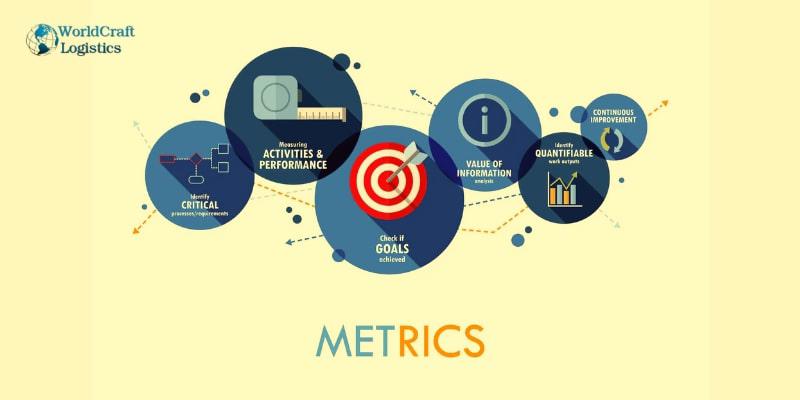
The figures and ratios a business monitors to gauge how effectively it ships items to clients are known as supply chain metrics. How successfully and economically businesses manage the flow of commodities from procurement to delivery, including operations like production, warehousing, and transportation, is a key component of supply chain execution efficiency.
Where to invest to get the best returns is made clear by the use of the appropriate criteria.
If you want to better understand new supply chain terms, click on the following articles to supplement your knowledge:
- Mastering inventory management in supply chain knowledge to Success
- Bullwhip effect in supply chain: Meaning, Example, Impact and Control
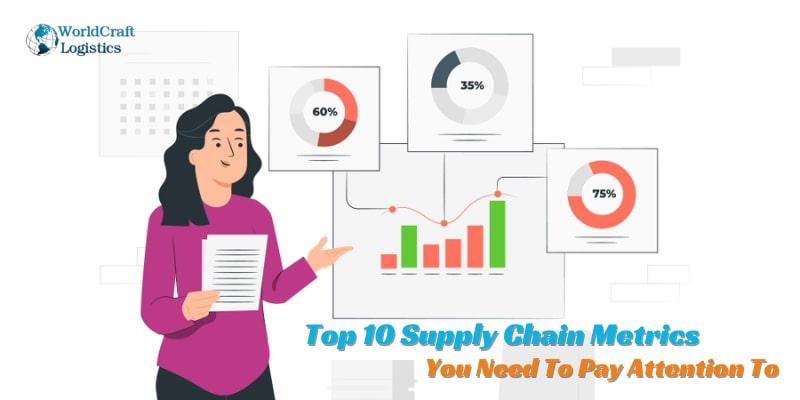
The amount of times a company's entire inventory has been sold over a given period of time is one of the most incredibly useful KPI supply chain currently available. This is a great indicator of effective production planning, process strategy, fulfillment skills, and marketing and sales management. It's crucial to calculate your on-time shipping rate, compare it to competitors in your industry, and establish a clear management reporting practice. By doing so, you can assess your current situation and take the necessary steps to improve it over time, which will increase your bottom line and build brand authority.
This metric compares the physical inventory with the information stored in your database to determine how accurate your inventory is. Reducing stock outages and inventory carrying costs can be achieved by maintaining inventory correctness.
Use this calculation to determine the correctness of your inventory:
Physical inventory count and database inventory count
Achieving an inventory accuracy rate of 95% to 99% is your aim. Implementing appropriate inventory naming and labeling procedures is one way to improve inventory accuracy. To get rid of manual data entry and lower human error, you can also employ inventory management and warehouse management systems.
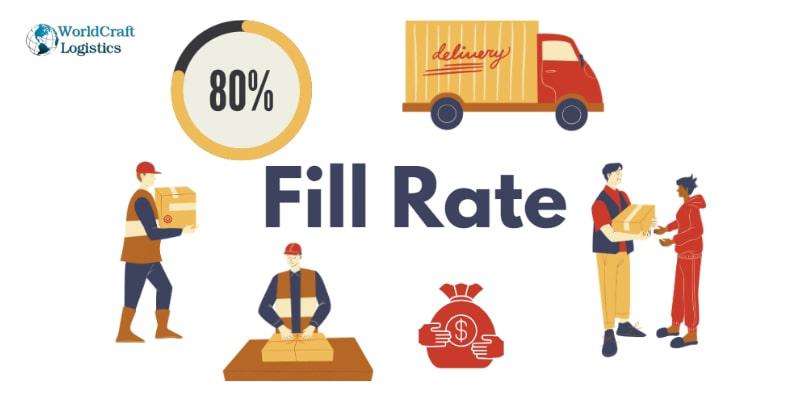
Fill rate is the next measure in the list of supply chain management metrics. This crucial statistic, which is a must-have for any worthwhile supply chain report, will provide you with a precise picture of the fraction or percentage of your customers' orders that are properly completed the first time (or during the initial shipping).
Fill rate, one of the most often used metrics to track supply chain development, is closely related to customer happiness and overall brand reputation—two key factors that drive the expansion and evolution of the commercial sector. Orders delivered, lines delivered, or individual goods delivered on the first attempt can be used as benchmarks for your fill rates. You can quickly increase your fill rate by identifying the precise fulfillment element if you notice any disparities in your fill rate.
The amount of orders you ship with no mistakes or deviations is measured by your perfect order rate. This statistic aids in cost management, customer satisfaction assessment, and tracking of your storage and delivery operations.
A great order is the result of four things: the delivery needs to be made on time, in full, undamaged, and with the right paperwork.
The formula for perfect order performance is as follows:
(Percentage of orders complete, % of orders delivered on schedule, % of orders free from damage, % of orders with correct documentation) x 100.
According to data from the American Productivity and Quality Center, firms have a flawless order index of 90% on average. You may enhance your flawless order performance by being more adept at accurately taking orders, allocating inventory fast, delivering goods on schedule, and creating accurate invoices.
The percentage of orders that are dispatched on or before the requested ship date is known as the "On-Time Shipping" ratio. This indicator is essential for guaranteeing client happiness as it allows you to monitor your delivery performance.
It is measurable using:
(Total Items / Number of Items Received on Time) x 100
An effective supply chain is shown by a high rate of on-time deliveries. On the other hand, orders that have a low on-time shipping rate arrive at clients too slowly. In order to keep your consumers, you must act quickly to address bad on-time shipping concerns.
Orders that are placed by customers but cannot be filled right away are known as backorders. Use the following calculation to get the backorder rate:
Order amount multiplied by 100 to determine the number of undeliverable orders.
Large backorders with protracted wait periods on a regular basis may be a sign of trouble. Using an inventory system to automatically place new orders for products before they run out of stock and obtain real-time data on your stock levels might help you decrease backorders.
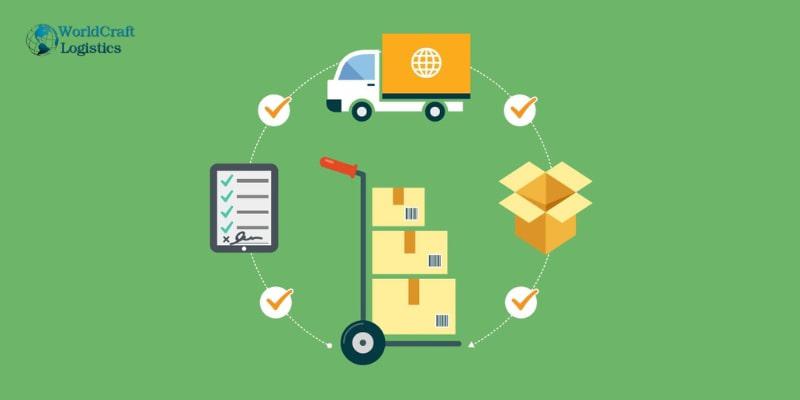
By breaking down your supply chain cycle into distinct lines, this supply chain performance measurement will provide you with an accurate assessment of how efficient (or inefficient) the entire cycle is. Every statistic in the image is intended to measure the amount of time that passes between an employee taking an item off the shelf and the packaging process being finished.
It will be obvious where your supply chain's vulnerabilities or delays are once you've established your goals and begun monitoring its progress. Consequently, you can take focused action to address these problems early on and reduce your overall cycle durations.
The average number of days it takes a company to sell off its inventory is measured by inventory days on hand. This statistic informs you when it's necessary to replenish your stock levels.
Using this formula, inventory days on hand can be determined:
(Yearly Average Inventory / Cost of Products Sold) x 365
A high inventory days on hand rate may mean that you are either not managing your inventory well enough or that you have difficult-to-sell goods.
The rate at which shipping things are returned to you is measured by the rate of return metric.
The following formula can be used to compute this metric:
Total Shipped / Total Returned Items
Determining the reasons behind your customers' purchase returns is essential to gaining valuable insights from your return rate. This will assist you in identifying any weaknesses in your supply chain and implementing the required fixes.
You may find out what proportion of your orders are accurately picked for shipping by looking up order picking accuracy. Poor selections lead to imprecise inventory, postponed shipments, and disgruntled clients. This formula can be used to determine the accuracy of order picking:
Order totals divided by the perfect order rate
Best-in-class operations achieve more than 99.89% order picking accuracy, according to the Warehousing Education and Research Council's 2019 DC Measures annual benchmarking survey.
Pick goods according to item codes and make as much use of automation as you can to improve picking accuracy. To save selection time and make inventory easier to find, you can also group related goods together.
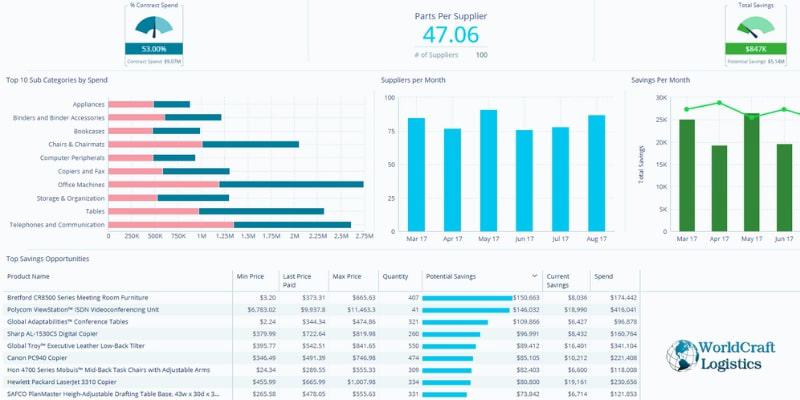
With only a few clicks, you can construct beautiful supply chain analytics with management tools all the KPIs you need, thanks to contemporary online data visualization tools. Each supply chain management KPI functions in concert to create a clear image that will advance your company. These illustrations will show you how:
We've gathered information on inventory measures in the example below, including the inventory-to-sales ratio, which you can use in conjunction with inventory turnover to determine your company's financial health. The carrying cost of inventory is the tool's second key performance indicator, and it is followed by inventory accuracy and out-of-stock items. In this case, the objectives are to define a company's stability, keep consumers, and prevent money from being wasted.
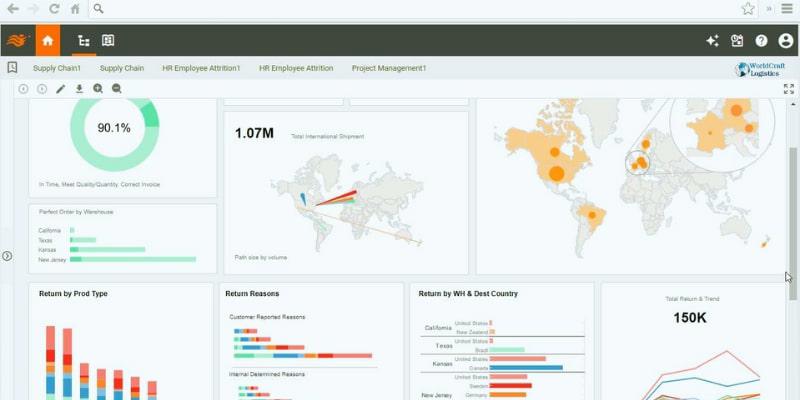
No one can dispute the fact that effective supply chain management carried out in a constantly consistent, strategic, and data-driven manner will produce extraordinarily beneficial long-term results—the kind that will support the long-term growth and evolution of your company.
The supply chain dashboard, one of our most potent business dashboards, provides a clear, useful, and graphical depiction of all the important aspects of supply chain performance, including inventory turnover and accuracy as well as the inventory-to-sales ratio. This specific reporting tool, which also functions as an interactive dashboard, will help you handle unforeseen supply chain situations, improve your stock buying procedures, lessen operational and financial inefficiencies, greatly increase the accuracy of your inventory, and much more by delving deeply into inventory management logistics. Since your inventory is crucial to your business's operations, managing it with a single nerve center will ensure that every initiative and effort in the supply chain helps rather than hinders your ability to operate your company.
You can implement initiatives that will not only ensure the smooth operation and continuous improvement of your supply chain processes, but also make sure that every single cog in the wheel is turning to maximum efficiency—which is, of course, priceless—by tracking these crucial supply chain performance visuals in one initiative space.
You may find examples of creating supply reports from many industries and functions in our informative tutorial, which will teach you how to build one just like this one.
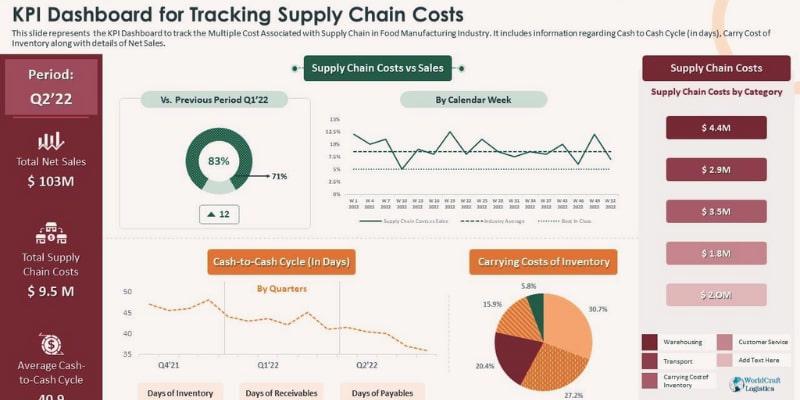
Another significant industry that depends on efficient supply chain management is consumer products. There shouldn't be much room for disregarding the financial analysis, especially when it comes to cost optimization, since it can seriously harm the bottom line. Your KPIs can be automated with the use of a thorough BI dashboard, which will also help you maintain focus on the data, graphics, and insights that are right in front of you.
To begin your presentation, you can see a brief summary of the average cash-to-cash cycle, total supply chain costs, and total net sales on top of this supply chain metrics dashboard. These are crucial supply chain management indicators. The supply chain costs are shown on the left side according to categories, which include customer service, inventory management, transportation, and warehousing. A comprehensive summary of supply chain expenses relative to sales may be found beneath these indicators. In addition, this KPI is analyzed by calendar week and contrasted with the prior time frame. We won't go into too much detail because we have already examined this statistic in-depth; the key is to monitor it, conduct a more thorough spend analysis, and make any necessary adjustments.
The cash-to-cash cycle and inventory carrying costs are two other crucial cost-related details that are displayed on the right side of this supply chain performance dashboard. If you want to know how much cash you need to finance continuing operations and how much profit you can make based on your inventory, these representations are crucial. Supply chain dashboard software makes it simple to establish such an online dashboard.
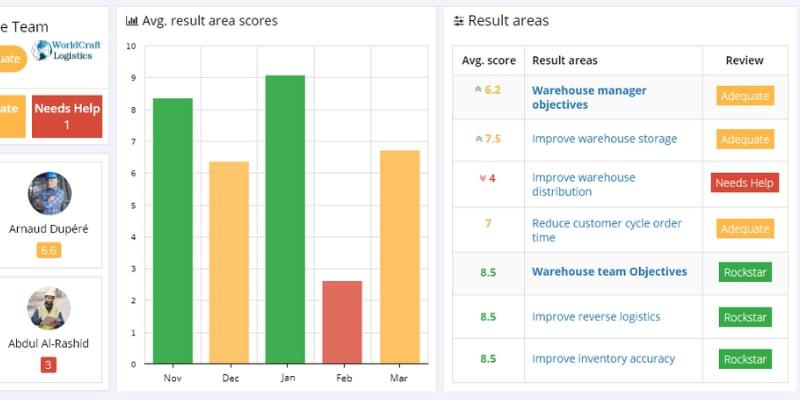
Supply chain metrics are your buddy when you're a busy warehouse manager trying to keep things running smoothly and successfully. Using the appropriate supply chain management. KPIs can enable you to monitor essential expenses, shipments, and inventory even in times of stress.
For example, dynamic warehouse KPI dashboard of Worldcraft Logistics is made to reveal important trends and crucial real-time data in an easily comprehensible manner. Here, you may keep an eye on your late delivery expenses, examine your overall shipments by nation or region, break down your major operating expenses, and quickly check your perfect order rates.
This melting pot of visual insights is designed to enhance decision-making in addition to providing warehouse managers with the tools they need to continuously make insightful adjustments to their operating strategy. In the event of a problem, it is feasible to identify it in a matter of minutes, get in touch with the appropriate personnel, and act quickly.
The ability to adjust to changing circumstances is essential for supply chain management success. This supply chain KPI dashboard's insights make it feasible to respond effectively in nearly every circumstance.
After discussing examples of supply chain KPIs and the dashboards that make them visible, we'll pause to consider why supply chain metrics are significant.
For numerous reasons, supply chain-based KPIs are essential to the core fulfillment and logistics strategy of your business. Actually, according to surveys, the market for supply chain analytics is predicted to grow to a value of $16.82 billion by 2027. This is a result of the fact that firms can increase their operational, strategic, and tactical efficiency by utilizing analytics to inform supply chain decision-making.

The primary advantages and explanations for the significance of KPI tracking in supply chain management are as follows:
Effective communication is essential to a supply chain's success. Every gear in the supply chain machine will become smoother, more economical, and more dependable once all parties involved have a better grasp of their roles and have access to the information needed to fulfil them.
This kind of unified access to priceless data is made possible by KPIs and metrics, which will facilitate collaboration, enhance communication, and guarantee that your inventory is handled profitably while every product makes it from your warehouse to the intended recipient without incident.
In the era of information, the amount of sources, platforms, and touchpoints to examine is getting bigger, which makes fulfillment procedures unduly complex. Managing active supply chains soon turns sifting through an ever-growing volume of data into an uphill battle. However, KPIs will enable you to concentrate solely on the important insights.
Supply chain-based metrics present the important information in an easily understood visual style from a single, central location. Using supply chain-style data will not only help you better manage your logistical operations, but it will also help you see hidden trends that will greatly enhance your overall strategy or spot any emerging issues (gaps in inventory, a lack of inventory, bottlenecks in your delivery processes, etc.) before they become serious.
Supply chain KPI performance indicators are essential since they will provide you with all the information you require to always be flexible and responsive. Complete adaptability is required for successful supply chain management in every circumstance. If something goes wrong, as it nearly always will when dealing with supply chains with multiple stages to take into account, you need to be able to address it right away.
Making sure your supply chain is strong can help you stand out from the competition as consumer needs and the business environment continue to change. With target data representations you can quickly assess, supply chain-focused metrics will provide you with the knowledge and assurance to make insightful strategic adjustments to your operations based on the environment around you. This will allow you to make decisions on the fly with confidence. Your firm will expand more if you can constantly meet or surpass the fulfillment expectations of your clients or consumers; supply chain-based visualizations will make this possible.
You will optimize your supply chain for consistent success in a competitive commercial market if you can develop projections that deliver genuine value and make wise decisions under duress. As a result, your growth and profitability will be maximized.
Now that you understand the importance and usefulness of supply chain KPIs and supply chain quality indicators, let's examine how to make the most of them to grow your business. First, we'll approach your informative options using a SMART framework.
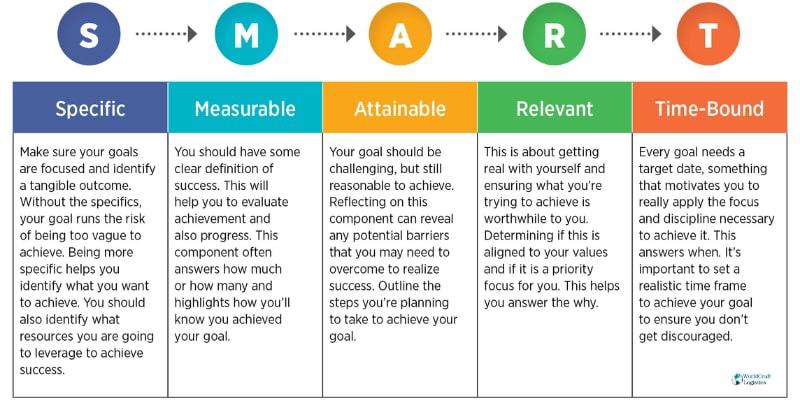
Setting SMART KPI goals can help you get the relevant insights for your supply chain analytics strategy. By following this selection methodology, you can be sure that the visuals you work with are actually beneficial to the business.
In order to choose appropriate insights using the SMART framework, make sure that your objectives (as well as any related visualizations) are:
Time-bound, relevant, quantifiable, achievable, and specific
By systematically addressing each objective in a cooperative setting, you will establish strong groundwork for your supply chain-based analysis endeavors.
Even though it seems so simple, you'd be surprised at how many logistics managers fail to notice this crucial element.
Because the supply chain is dynamic and prone to interruptions at every stage, it is imperative that you routinely monitor your key performance indicators. Prior to dividing the remaining real-time insights into weekly, bi-weekly, and monthly categories, determine which ones you will need to review every day.
Maintaining consistency is essential when tracking information related to the supply chain. You won't miss a beat if you have designated times for tracking particular insights. This will guarantee that everything goes smoothly. It's always a good idea to set up notifications depending on specific benchmarks or criteria in order to stay as responsive as feasible.
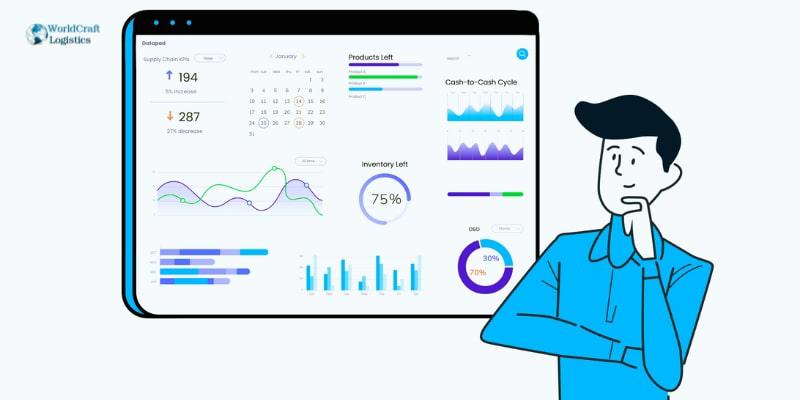
Financial KPIs and supply chain quality go hand in hand. Any logistical operation you can streamline will benefit the financial stability of your business. On the other hand, poor logistical management will negatively affect the long-term financial stability of your business.
Combining these two sets of information will allow you to find clear links between your inventory control and order fulfillment procedures and your financial development.
Finding these connections will enable you to reduce wasteful spending and streamline procedures for optimal financial efficiency using your analytical tools.
Integrating all of your visual insights into a single, interactive BI dashboard is the best way to extract every last bit of value from them.
All of your supply chain KPIs examples will work together to provide a wealth of data from a single interactive screen if everything is housed on a single, centralized platform. You will be able to examine each crucial link in your supply chain and make insightful choices instantly if you do this.
Having a broad perspective will enable you to recognize the ways in which each insight builds upon the others, enhancing the effectiveness, profitability, and knowledge of your analytical work.
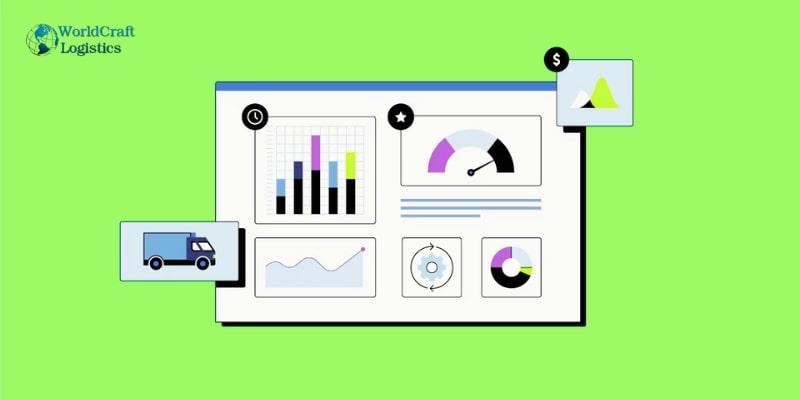
Last but not least, in order to maximize the value of your metrics, you must make sure that all parties involved in your supply chain have access to the tools, insights, and indicators they need to work as efficiently as possible.
Everyone has to cooperate to make sure every link in the chain is properly optimized and well-oiled. Everyone will be in agreement if you provide your staff with enough training and educational resources.
Equipped with this aggregate wealth of knowledge, you can make sure that, one astute move at a time, your supply chain propels your business ahead of the competition.
SEO
Digital Marketing/SEO Specialist
Simon Mang is an SEO and Digital Marketing expert at Wordcraft Logistics. With many years of experience in the field of digital marketing, he has shaped and built strategies to effectively promote Wordcraft Logistics' online presence. With a deep understanding of the logistics industry, I have shared more than 500 specialized articles on many different topics.

Education
01/05/2025

Education
02/18/2025

Education
01/01/2024

Education
08/28/2024
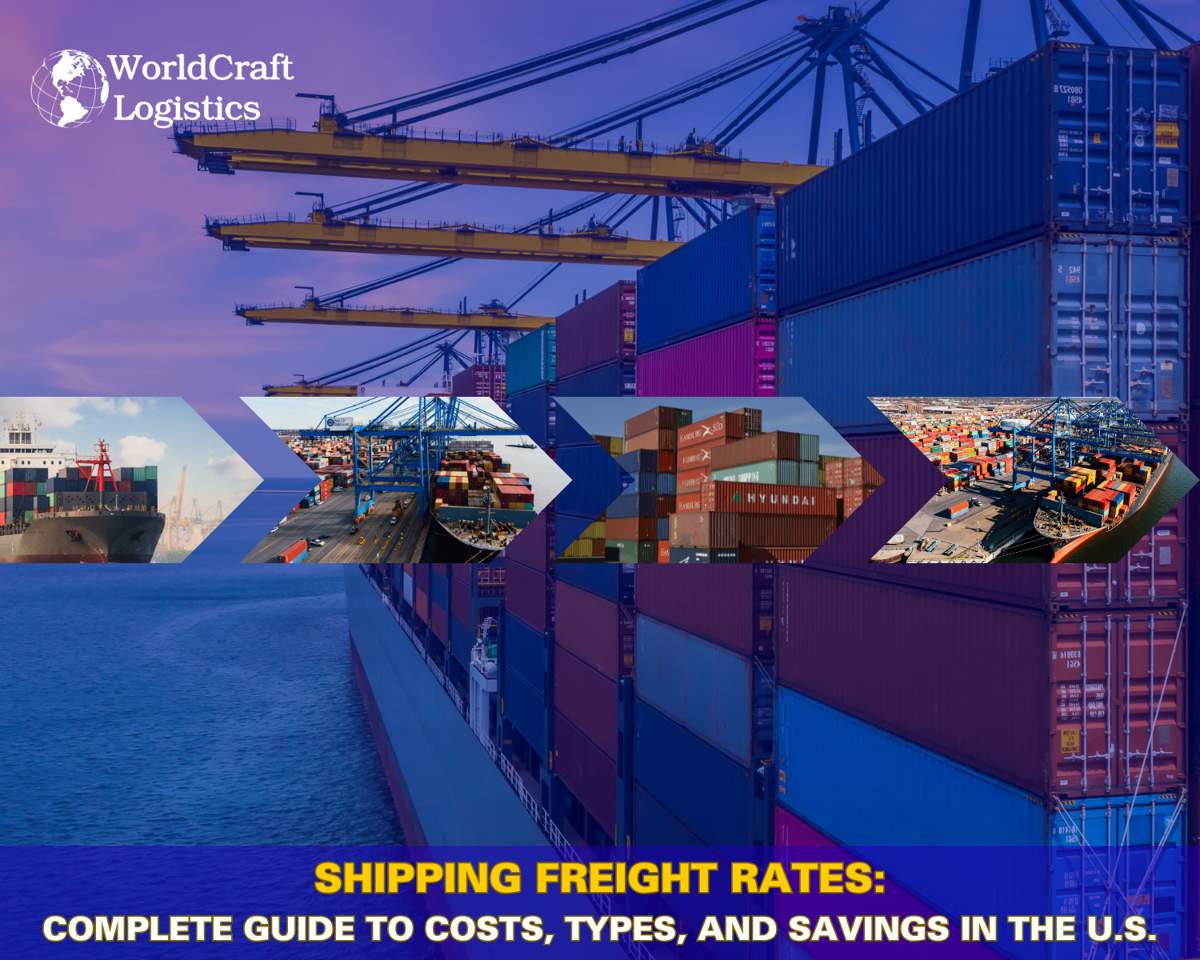
Education
09/09/2025